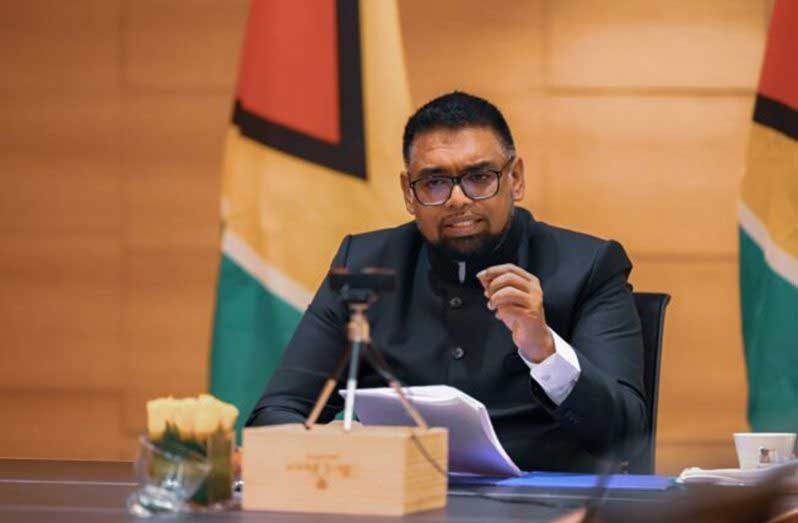–says focus is on addressing wants and needs
GUIDED by its Low-Carbon Development Strategy (LCDS), the Government of Guyana has been deploying more strategies to simultaneously conserve biodiversity and enhance livelihoods, President Dr. Irfaan Ali has said.
The Head of State recently outlined the government’s vision for the promotion of fair and sustainable development, while simultaneously safeguarding the nation’s forests, which constitute approximately 85 per cent of its total land area.
“We live in a world where people have needs and wants, so, in building out the model, we must be able to address those needs and wants,” Dr. Ali stressed.
For example, in mangrove-forested areas, the government has been working to not only restore and maintain the natural sea defence, but also utilise those areas to promote job creation and enhanced livelihoods.
“It’s not only about the regeneration of mangroves; it is how we can use the mangrove to stimulate livelihoods. We are working with single-parents, young people on honey production…[and on] how we can use the mangrove areas for eco-tourism purposes, so that we build in the model the livelihood options at the community levels,” President Ali explained while engaging regional stakeholders.
OVERFISHING, HUNTING
Further, President Ali disclosed that the government has recently introduced newer techniques for fishing, thereby ensuring that aquaculture remains thriving, while also protecting the environment.
“We are also working on cage farming in the natural environment, so there is no overfishing, and we give the traditional hunters an opportunity to get all their fish in a more structured way than hunting and overfishing in the area,” President Ali said.
“All of this are strategies that we are deploying,” he added.
In addition to this, the government recently revealed plans to bolster Guyana’s legislation on hunting, with the aim of protecting hunting grounds and the biodiversity that lives there.
ILLEGAL FISHING
Guyana loses some $100 million yearly as a result of illegal fishing in its waters, and to address this, the government is considering the implementation of a licensing regime.
“It is estimated that we could lose as much as $100 million per year from illegal fishing in our waters, but this is in the deep-seas, though. So, investing in more assets for the army would have that significant benefit of bringing in revenue, even if it doesn’t allow us to bring in revenue, because they can keep the illegal fishing out, so that we can actively exercise a licensing regime, so that there’d be more revenue for the country,” Vice-President Dr. Bharrat Jagdeo said recently.
Back in November 2023, the Ministry of Agriculture had outlined a National Plan of Action to prevent, deter, and eliminate illegal, unreported, and unregulated fishing.
The aim of the framework is to provide a targetted approach towards fisheries monitoring, control, surveillance, and enforcement, given the nature of the fisheries, and the limited human and financial resources.
According to the United Nations Food and Agriculture Organisation (FAO), illegal, unreported, and unregulated fishing activities are responsible for the loss of 11-26 million tons of fish each year, which is estimated to have an economic value of US$10 – 23 billion.
In order to combat said activities, Sustainable Development Goal Number 4 urges the international community to effectively regulate and end them.



.jpg)








